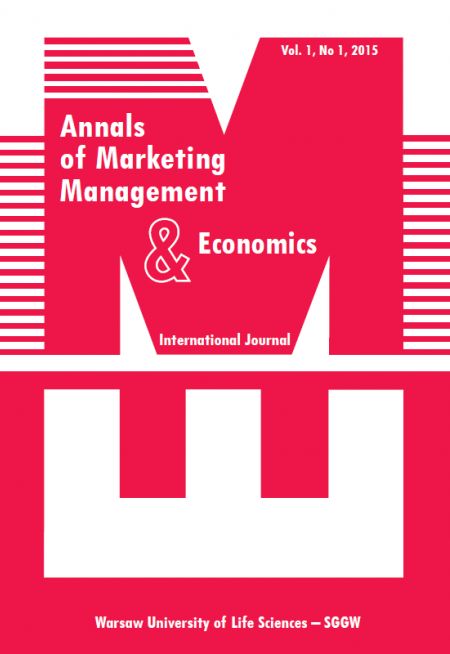Main Article Content
Article Details
Andrienko N., Fuchs G., 2013. Towards Privacy-Preserving Semantic Mobility Analysis, Eurovis Workshop on Visual Analytics 17-21 June, Retrieved From Http://Geoanalytics.Net/and/Papers/Eurova13.Pdf.
Boiko G., 2016. Sotsial'na Mobil'nist' Pedahoha: Teoretyko-Metodolohichnyy Aspect (Social Mobility of Teacher: Theoretical And Methodological Aspects) [In Ukrainian], "Pedahohika i Psykholohiya Profesiynoyi Osvity" 2, 66-75.
Duval F., 2007. Prostranstvennaya Mobyl'nost' Naselenyya: Indikatory, Katehorii i Tipolohii (Spatial Mobility of the Population: Indicators, Categories And Typologies) [In Russian], (In:) Metodolohiya i Metody Izucheniya Mihratsyinnykh Protsessov, Mezhdystsyplynarnoe Uchebnoe Posobye, red. Zh. Zayonchkovskoy, Y. Molodykovoy, V. Mukomelya, Moskva, 71-95.
Faist T., 2000. Transnationalization in International Migration: Implications for the Study of Citizenship and Culture, "Ethnic And Racial Studies" 23 (2), 189-222. (Crossref)
Gil V., Widmer E.D., Kaufmann V., 2010. Does it Matter for Us that my Partner or I Commute?: Spatial Mobility For Job Reasons And The Quality of Conjugal Relationships in France, Germany and Switzerland, Zeitschrift für Familienforschung 22 (2), 149-170. (Crossref)
International Migration Report Highlights 2015, Retrieved From Http://Www.Un.Org/En/Development/Desa/Population/Migration/Publications/Migrationreport/Docs/Migrationreport2015_ Highlights.Pdf.
Kovalisko N., 1999. Trudova Mobil'nist' V Umovakh Rehional'noho Rynku Pratsi (Labour Mobility n Terms Of Regional Labor Market) [In Ukrainian], Avtoreferat Dysertatsiyi, Kharkiv [Typescript].
Kozlova O., Malecka T., Kozlov D., 2015. Profesiyna Mobil'nist' Maybutn'oho Vchytelya Yak Pedahohichna Problema (Professional Mobility of Future Teachers as a Pedagogical Problem) [In Ukrainian], Pedahohichni Nauky: Teoriya, Istoriya, Innovatsiyni Tekhnolohiyi 7, 63-72.
Libanova E., Cherenko L., Makarova O., 2012. Lyuds'kyy Rozvytok V Ukrayini: Transformatsiya Rivnya Zhyttya Ta Rehional'ni Dysproportsiyi (Human Development in Ukraine: the transformation of living standards and regional disproportions) [in Ukrainian], Kyiv.
Mägi K., Leetmaa K., Tammaru T., Ham Van M., 2015. Types of Spatial Mobility and the Ethnic Context Of Destination Neighbourhoods In Estonia, Discussion Paper 9602, 1161-1192. (Crossref)
Naselennya Ukrayiny, 2010. Trudova Emihratsiya V Ukrayini (the population of Ukraine. The labor migration in Ukraine) [in Ukrainian], Instytut Demohrafiyi Ta Sotsial'nykh Doslidzhen' im. M.V. Ptukhy Nan Ukrayiny, Kyiv.
Podliashanyk V., 2011. Sotsial'na Mobil'nist' Osobystosti (Social Mobility Oof the Individual) [in Ukrainian], Visnyk Chernihivs'koho Natsional'noho Pedahohichnoho Universytetu, "Psykholohichni Nauky" 94 (2), 90-93.
Pryimak V., 2001. Trudova Mobil'nist' Naselennya Ukrayiny I Rehional'ni Rynky Pratsi (Labour Mobility of the Population of Ukraine And Regional Labor Markets) [in Ukrainian], "Rehional'na Ekonomika" 4, 76-82.
Romão N.M.O., Escária V.M.A., 2004. Wage Mobility, job Mobility and Spatial Mobility in Portuguese Economy, Retrieved From Http://Www-Sre.Wu-Wien.Ac.At/Ersa/Ersaconfs/Ersa04/Pdf/584.Pdf.
Sereda Yu., 2010. Turystychni Praktyky Yak Sotsiokul'turnyy Fenomen: Osoblyvosti Konstruyuvannya V Suchasnomu Ukrayins'komu Suspil'stvi (Tourist Practices as a Sociocultural Phenomenon: The Design Features of a Modern Ukrainian Society) [In Ukrainian],Avtoreferat Dysertatsiyi, Kharkiv [Typescript].
Shevchuk L., 2016. Sotsial'nyy Prostir I Chas: Teoretyko-Metodolohichni Osnovy Formuvannya ta Problemy Vykorystannya (Social Space And Time: Theoretical And Methodological Foundations of Development And Problems of use) [In Ukrainian], Vydavnytstvo Tzov "Liha-Pres", Lviv.
Sokolov R., 2011. Predpochtenyya Molodykh Horozhan v Otnoshenii Rayonov Prozhyvaniya (Preferences of Young Townspeople Regarding Areas of Residence) [In Russian], Vestnyk Adyheyskoho Hosudarstvennoho Universyteta, Rehyonovedenie: Filosofiya, Istoriya, Sotsiolohiya,
Yurisprudentsiya, Politolohiya, Kul'turolohiya 2, Retrieved From Http://Vestnik.Adygnet.Ru/Files/2011.3/1262/Sokolov2011_3.Pdf.
Stadnytskyi Yu., 2016. Prostorolohiya: Nauka Pro Prostorovi Aspekty Efektyvnosti (Spatiology: the Science of Spatial Aspects of of Efficiency) [Ukrainian], Naukovyy Visnyk Uzhhorods'koho Universytetu, Ekonomika 1 (47), 2, 18-22.
Stroyev P., Kahn M., 2016. Prostranstvennaya Mobyl'nost' Naseleniya: Ekonomicheskie i Sotsyal'nye Aspekty (Spatial Mobility of the Population: Economic and Social Aspects) [In Russian], "Ekonomika, Nalohi, Pravo" 6, 35-41.
Yadov V., 1998. Sotsyoloiya V Rossii (Sociology In Russia) [In Russian], 2nd Edn., Izdavastvo in-Ta Sotsiolohii Ran, Moskva.
Downloads

Utwór dostępny jest na licencji Creative Commons Uznanie autorstwa 4.0 Międzynarodowe.





